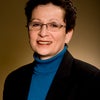As I read The Wall Street Journal’s review of the recently published book The Glass Universe, I realized that many people are not familiar with women who have contributed to astronomy in the U.S. The book tells the story of women “computers” much as other recent books told the stories of the women computers who contributed to the space age – particularly Rise of the Rocket Girls: The Women Who Propelled Us, from Missiles to the Moon to Mars and Hidden Figures: The American Dream and the Untold Story of the Black Women Mathematicians Who Helped Win the Space Race. Match the woman with her accomplishment:
____ 1. She classified over 225,000 stars and her work was published in nine volumes of the Henry Draper Catalogue.
____ 2. She discovered the cepheid variable period-luminosity relationship and developed a standard of photographic measurements called the Harvard Standard.
____ 3. The first American woman to discover a comet, she was the first professor hired when Vassar College opened.
____ 4. She discovered dark matter in the universe and received the 1993 National Medal of Science.
____ 5. She discovered 10 novae, 52 nebulae, 310 variable stars and white dwarfs, all without formal education in astronomy
A. Maria Mitchell
B. Annie Jump Cannon
C. Williamina Stevens Fleming
D. Henrietta Swan Leavitt
E. Vera Rubin
Astronomer Maria Mitchell has many firsts to her credit: the first woman to work as a professional astronomer, the first professor at Vassar College, the first American woman to discover a comet (1847) and the first woman elected as a Fellow of both the American Academy of Arts and Sciences (1948) and the American Association for the Advancement of Science (1850). Raised in a Quaker family in Nantucket, Massachusetts, Mitchell’s father encouraged her interest in astronomy. At age 12, she helped him calculate the moment of occurrence of an annular eclipse. The first person hired as a professor at Vassar, she was also the director of the observatory. As director, she demanded equal pay with men – and got it! Mitchell has been inducted into the National Women’s Hall of Fame.
An astronomer who was responsible for the cataloging of hundreds of thousands of stars, Annie Jump Cannon’s interest in astronomy was ignited by her mother when she was young. At Wellesley, she studied physics and astronomy and after her graduation, pursued additional study at Radcliffe College in astronomy. In 1896, Cannon was hired as an assistant at the Harvard Observatory. She and other “Pickering Women” (the director of the observatory was Edward Pickering), including Williamina Flemings, worked to document and classify stars. Cannon found the existing system difficult to work with and developed a new spectral system. She classified more than 225,000 stars and her work was published in nine volumes of the Henry Draper Catalogue. Cannon has been inducted into the National Women’s Hall of Fame.
After immigrating to the U.S. from Scotland in 1878, Williamina Stevens Fleming found employment as a housekeeper for Edward Pickering. Annoyed by the poor work of the male employees at the observatory, Pickering said his maid could do better and, in 1881, hired Fleming to do clerical work and calculations at the observatory. Fleming proved that maids could do a better job than the male employees and developed a new system to classify stars according to their spectra. This system became known as the “Pickering-Fleming” system. Fleming was placed in charge of editing all studies published by the observatory. In 1898, she became the curator of astronomical photographs, the first woman put in this important position. Fleming discovered 10 novae, 52 nebulae, 310 variable stars and white dwarfs, all without formal education in astronomy. In 1906, she became the first American woman elected to the Royal Astronomical Society.
Henrietta Swan Leavitt discovered astronomy as a senior in college. She began volunteering at the Harvard Observatory in 1895 and was hired as a member of the permanent staff seven years later where she worked with both Fleming and Cannon. She was appointed head of the photographic photometry department which studied photo images of stars to determine their magnitude. Her most significant contribution was the development of the cepheid variable period-luminosity relationship which captured the changes in the brightness of these pulsating stars. She also developed a standard of photographic measurements called the Harvard Standards and accepted by the International Committee on Photographic Magnitudes in 1913.
The discoverer of dark matter, which constitutes 84% of the matter of the universe, Vera Rubin fell in love with the stars and sky as a child looking out of the windows of her bedroom. She built her own telescope and used every English paper assignment to explore astronomy topics. Supported by her parents, she received a scholarship to Vassar College and continued in graduate studies at Cornell. She developed a significant interest in galaxy dynamics at Cornell that would dominate much of her career. Rubin also discovered the supergalactic plane, although she didn’t realize it at the time. Rubin then pursued her Ph.D. at Georgetown University. In 1965, she began working with Kent Ford at the Carnegie Institution of Terrestrial Magnetism in Washington, DC. Together, Rubin and Ford discovered dark matter. The citation for Rubin’s 1993 National Medal of Science reads: “for her pioneering research programs in observational cosmology which demonstrated that much of the matter in the universe is dark, and for significant contributions to the realization that the universe is more complex and more mysterious than had been imagined.”
Learn about more she-roes and celebrate amazing women. These women astronomers are among the more than 850 women profiled in the book Her Story: A Timeline of the Women Who Changed America. I am proud to tell women’s stories and to write them back into history.
(Answers 1-B, 2-D, 3-A, 4-E, 5-C)
